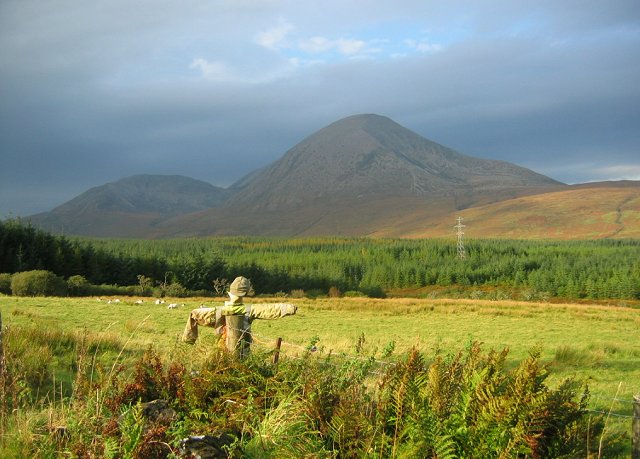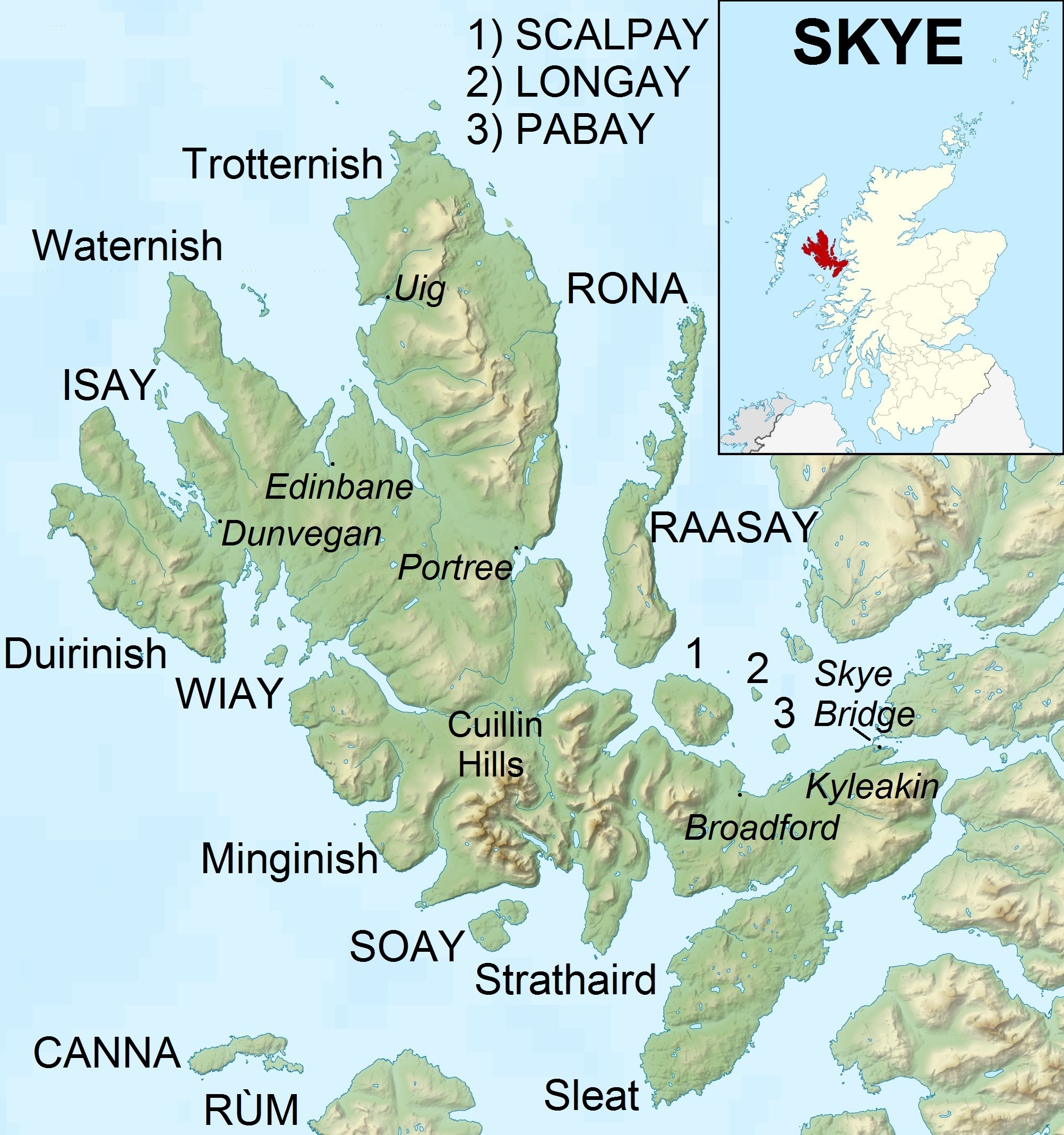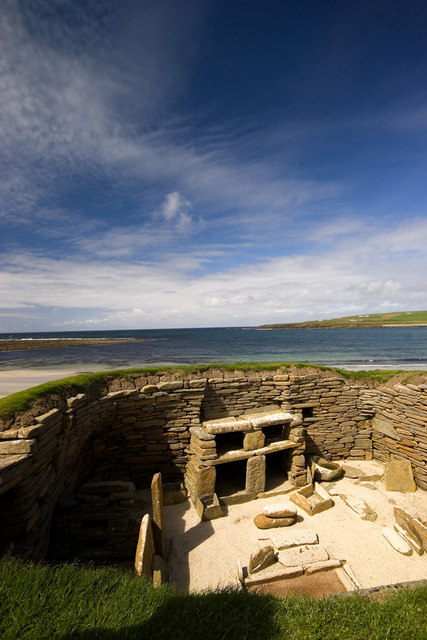|
Skye Marble Railway
The Skye Marble Railway was a narrow gauge industrial railway on the Isle of Skye, Scotland which operated from 1910 to 1912. Marble Marble is a metamorphic rock composed of recrystallized carbonate minerals, most commonly calcite or Dolomite (mineral), dolomite. Marble is typically not Foliation (geology), foliated (layered), although there are exceptions. In geology, the ... was discovered near Kilchrist in Strath Suardal about south west of Broadford around 1907. A large factory was built near the quarry for cutting and polishing the quarried blocks. In January 1910, the company put before the Skye District Committee plans for the railway including a level crossing in Broaford. The plans were accepted by the Committee with the provision that the company take responsibility for any accident which happened at the crossing. By August 1910, it was reported that the railway to the marble quarries was progressing well and expected to be completed within the anticipated ti ... [...More Info...] [...Related Items...] OR: [Wikipedia] [Google] [Baidu] |
Broadford, Skye
Broadford ( gd, An t-Àth Leathann), together with nearby Harrapool, is the second-largest settlement on the Isle of Skye, Scotland. Lying in the shadow of the Red Cuillin mountains, Broadford is within the parish of Strath. A long meandering village historically consisting of a few buildings on either side of the Broadford River, the many small townships around the wide sweep of the bay have grown together and Broadford now stretches for around the southern side of Broadford Bay. History Like many places in Skye, Broadford derives its name from Old Norse. To the Vikings, this was ''Breiðafjorðr'' – the wide bay. The Gaelic name is of modern derivation and assumes that the "ford" element meant a river crossing. West of Broadford in Glen Suardal, on the lower slopes of Beinn na Caillich, is Goir a' Bhlàir, 'the field of battle' ( ). The battle concerned was apparently a decisive action by the Gaelic Clan Mackinnon against the Norsemen. From the late 1700s Broadford wa ... [...More Info...] [...Related Items...] OR: [Wikipedia] [Google] [Baidu] |
Isle Of Skye
The Isle of Skye, or simply Skye (; gd, An t-Eilean Sgitheanach or ; sco, Isle o Skye), is the largest and northernmost of the major islands in the Inner Hebrides of Scotland. The island's peninsulas radiate from a mountainous hub dominated by the Cuillin, the rocky slopes of which provide some of the most dramatic mountain scenery in the country. Slesser (1981) p. 19. Although has been suggested to describe a winged shape, no definitive agreement exists as to the name's origins. The island has been occupied since the Mesolithic period, and over its history has been occupied at various times by Celtic tribes including the Picts and the Gaels, Scandinavian Vikings, and most notably the powerful integrated Norse-Gaels clans of MacLeod and MacDonald. The island was considered to be under Norwegian suzerainty until the 1266 Treaty of Perth, which transferred control over to Scotland. The 18th-century Jacobite risings led to the breaking-up of the clan system and later cleara ... [...More Info...] [...Related Items...] OR: [Wikipedia] [Google] [Baidu] |
Scotland
Scotland (, ) is a country that is part of the United Kingdom. Covering the northern third of the island of Great Britain, mainland Scotland has a border with England to the southeast and is otherwise surrounded by the Atlantic Ocean to the north and west, the North Sea to the northeast and east, and the Irish Sea to the south. It also contains more than 790 islands, principally in the archipelagos of the Hebrides and the Northern Isles. Most of the population, including the capital Edinburgh, is concentrated in the Central Belt—the plain between the Scottish Highlands and the Southern Uplands—in the Scottish Lowlands. Scotland is divided into 32 administrative subdivisions or local authorities, known as council areas. Glasgow City is the largest council area in terms of population, with Highland being the largest in terms of area. Limited self-governing power, covering matters such as education, social services and roads and transportation, is devolved from the Scott ... [...More Info...] [...Related Items...] OR: [Wikipedia] [Google] [Baidu] |
Hunslet Engine Company
The Hunslet Engine Company is a locomotive-building company, founded in 1864 in Hunslet, England. It manufactured steam locomotives for over 100 years and currently manufactures diesel shunting locomotives. The company is part of Ed Murray & Sons. History The early years 1864–1901 The company was founded in 1864 at Jack Lane in Hunslet by John Towlerton Leather, a civil engineering contractor, who appointed James Campbell (son of Alexander Campbell, a Leeds engineer) as his works manager. The first engine was completed in 1865. It was ''Linden'', a standard gauge delivered to Brassey and Ballard, a railway civil engineering contractor as were several of the firm's early customers. Other customers included collieries. This basic standard gauge shunting and short haul "industrial" engine was to be the main-stay of Hunslet production for many years. In 1871, James Campbell bought the company for £25,000 (payable in five instalments over two years) and the firm remained ... [...More Info...] [...Related Items...] OR: [Wikipedia] [Google] [Baidu] |
Narrow Gauge Railway
A narrow-gauge railway (narrow-gauge railroad in the US) is a railway with a track gauge narrower than standard . Most narrow-gauge railways are between and . Since narrow-gauge railways are usually built with tighter curves, smaller structure gauges, and lighter rails, they can be less costly to build, equip, and operate than standard- or broad-gauge railways (particularly in mountainous or difficult terrain). Lower-cost narrow-gauge railways are often used in mountainous terrain, where engineering savings can be substantial. Lower-cost narrow-gauge railways are often built to serve industries as well as sparsely populated communities where the traffic potential would not justify the cost of a standard- or broad-gauge line. Narrow-gauge railways have specialised use in mines and other environments where a small structure gauge necessitates a small loading gauge. In some countries, narrow gauge is the standard; Japan, Indonesia, Taiwan, New Zealand, South Africa, and the Aust ... [...More Info...] [...Related Items...] OR: [Wikipedia] [Google] [Baidu] |
Industrial Railway
An industrial railway is a type of railway (usually private) that is not available for public transportation and is used exclusively to serve a particular industrial, logistics, or military site. In regions of the world influenced by British railway culture and management practices, they are often referred to as tramways (which are distinct from trams or streetcars, a passenger technology). Industrial railways may connect the site to public freight networks through sidings, or may be isolated (sometimes very far away from public rail or surface roads) or located entirely within a served property. Overview Industrial railways were once very common, but with the rise of road transport, their numbers have greatly diminished. An example of an industrial railway would transport bulk goods, for example clay from a quarry or coal from a mine, to an interchange point, called an exchange siding, with a main line railway, onwards from where it would be transported to its final desti ... [...More Info...] [...Related Items...] OR: [Wikipedia] [Google] [Baidu] |
Marble
Marble is a metamorphic rock composed of recrystallized carbonate minerals, most commonly calcite or Dolomite (mineral), dolomite. Marble is typically not Foliation (geology), foliated (layered), although there are exceptions. In geology, the term ''marble'' refers to metamorphosed limestone, but its use in stonemasonry more broadly encompasses unmetamorphosed limestone. Marble is commonly used for Marble sculpture, sculpture and as a building material. Etymology The word "marble" derives from the Ancient Greek (), from (), "crystalline rock, shining stone", perhaps from the verb (), "to flash, sparkle, gleam"; Robert S. P. Beekes, R. S. P. Beekes has suggested that a "Pre-Greek origin is probable". This Stem (linguistics), stem is also the ancestor of the English language, English word "marmoreal," meaning "marble-like." While the English term "marble" resembles the French language, French , most other European languages (with words like "marmoreal") more closely resemb ... [...More Info...] [...Related Items...] OR: [Wikipedia] [Google] [Baidu] |
Aberdeen Journal
''The Press and Journal'' is a daily regional newspaper serving northern and highland Scotland including the cities of Aberdeen and Inverness. Established in 1747, it is Scotland's oldest daily newspaper, and one of the longest-running newspapers in the world. History The newspaper was first published as a weekly title, ''Aberdeen's Journal'', on 29 December 1747. In 1748 it changed its name to the ''Aberdeen Journal''. It was published on a weekly basis for 128 years until August 1876, when it became a daily newspaper. The newspaper was owned by the Chalmers family throughout the nineteenth century, and edited by members of the family until 1849, when William Forsyth became editor. Its political position was Conservative. In November 1922, the paper was renamed ''The Aberdeen Press and Journal'' when its parent firm joined forces with the ''Free Press''. Historical copies of the ''Aberdeen Journal'', dating back to 1798, are available to search and view in digitised form a ... [...More Info...] [...Related Items...] OR: [Wikipedia] [Google] [Baidu] |
Sheffield Telegraph
The ''Sheffield Telegraph'' is a weekly newspaper published in Sheffield, England. Founded in 1855 as the ''Sheffield Daily Telegraph'', it became known as the ''Sheffield Telegraph'' in 1938. History The ''Sheffield Telegraph'' was founded in 1855 as the ''Sheffield Daily Telegraph''. It was the city's first daily newspaper, published at 08:00 each morning. The newspaper struggled until W. C. Leng became editor in 1864, moving the business to Aldine Court, introducing Linotype printing and using it to support the Conservative Party. After taking over the ''Sheffield and Rotherham Independent'' in 1938, it dropped the "Daily" from its name. The history of Sheffield's "Telegraph" is intertwined with that of ''The Star'' and the ''Green Un''. All three newspapers are published today by Johnston Press PLC. As has been the case for its sister publications, the ''Telegraph'' has undergone several name changes during its history. The ''Sheffield Daily Telegraph'' was first ... [...More Info...] [...Related Items...] OR: [Wikipedia] [Google] [Baidu] |
Railways On Scottish Islands
Rail transport (also known as train transport) is a means of transport that transfers passengers and goods on wheeled vehicles running on rails, which are incorporated in tracks. In contrast to road transport, where the vehicles run on a prepared flat surface, rail vehicles (rolling stock) are directionally guided by the tracks on which they run. Tracks usually consist of steel rails, installed on sleepers (ties) set in ballast, on which the rolling stock, usually fitted with metal wheels, moves. Other variations are also possible, such as "slab track", in which the rails are fastened to a concrete foundation resting on a prepared subsurface. Rolling stock in a rail transport system generally encounters lower frictional resistance than rubber-tyred road vehicles, so passenger and freight cars (carriages and wagons) can be coupled into longer trains. The operation is carried out by a railway company, providing transport between train stations or freight customer facili ... [...More Info...] [...Related Items...] OR: [Wikipedia] [Google] [Baidu] |
3 Ft Gauge Railways In Scotland
3 (three) is a number, numeral and digit. It is the natural number following 2 and preceding 4, and is the smallest odd prime number and the only prime preceding a square number. It has religious or cultural significance in many societies. Evolution of the Arabic digit The use of three lines to denote the number 3 occurred in many writing systems, including some (like Roman and Chinese numerals) that are still in use. That was also the original representation of 3 in the Brahmic (Indian) numerical notation, its earliest forms aligned vertically. However, during the Gupta Empire the sign was modified by the addition of a curve on each line. The Nāgarī script rotated the lines clockwise, so they appeared horizontally, and ended each line with a short downward stroke on the right. In cursive script, the three strokes were eventually connected to form a glyph resembling a with an additional stroke at the bottom: ३. The Indian digits spread to the Caliphate in the 9th ... [...More Info...] [...Related Items...] OR: [Wikipedia] [Google] [Baidu] |





